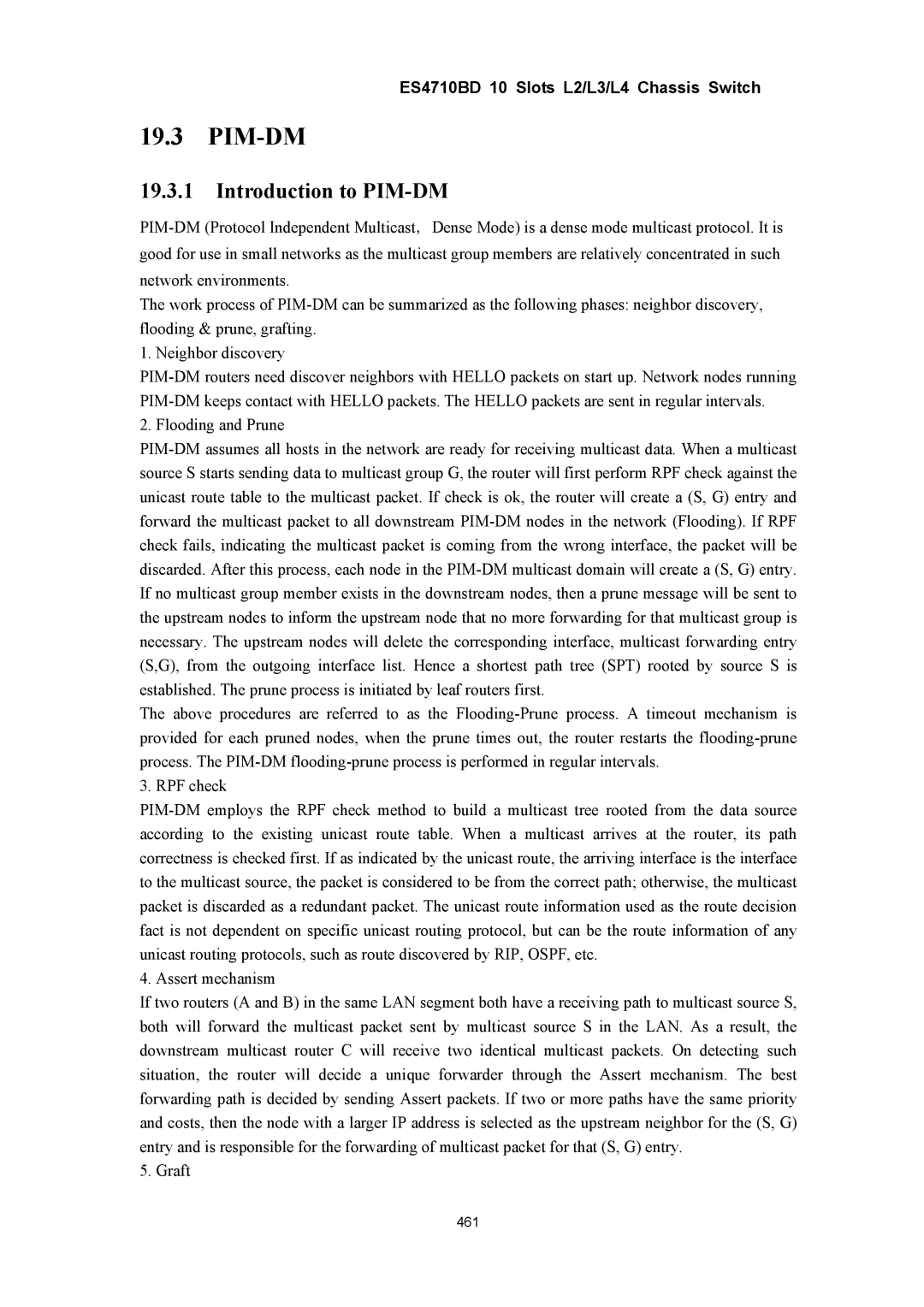ES4710BD 10 Slots L2/L3/L4 Chassis Switch
19.3PIM-DM
19.3.1Introduction to PIM-DM
The work process of
1. Neighbor discovery
2. Flooding and Prune
The above procedures are referred to as the
3. RPF check
4. Assert mechanism
If two routers (A and B) in the same LAN segment both have a receiving path to multicast source S, both will forward the multicast packet sent by multicast source S in the LAN. As a result, the downstream multicast router C will receive two identical multicast packets. On detecting such situation, the router will decide a unique forwarder through the Assert mechanism. The best forwarding path is decided by sending Assert packets. If two or more paths have the same priority and costs, then the node with a larger IP address is selected as the upstream neighbor for the (S, G) entry and is responsible for the forwarding of multicast packet for that (S, G) entry.
5. Graft
461
